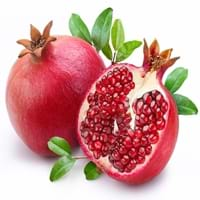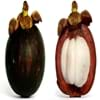Health Benefits
Increases metabolic rate, Lower blood pressure, Protects against kidney stone formation
Cancer prevention, Heart care, Helps in cartilage regeneration, Improves stomach health, Increase in haemoglobin, Increases metabolic rate, Prevents constipation
General Benefits
Gives you energy
Boosts immune system, Controls blood pressure, Controls blood sugar levels, Digestive aid, Maintains healthy cholesterol level
Skin Benefits
Skin cleansing
Anti-aging benefits, Skin rejuvenation, Treatment of acne
Hair Benefits
NA
Prevents hair loss, Promotes longer and healthier hair, Treatment of dandruff
Allergy Symptoms
NA
Abdominal pains, Anaphylaxis, Itching
Side Effects
Affects blood glucose levels, Decrease in blood sugar levels, Coagulation
Allergic reaction, Cold, Breathing difficulty, Irritation, Swelling
Best Time to Eat
As a snack in the late afternoon, Eat the fresh ones, avoid mixing with any other foods, don't eat after meal., Morning time (before lunch)
Best if taken as a breakfast (or empty stomach), As a snack in the late afternoon, Eat the fresh ones, avoid mixing with any other foods, don't eat after meal., Morning time (before lunch)
Vitamin A (Retinol)
Not Available
Vitamin B1 (Thiamin)
Not Available
Vitamin B2 (Riboflavin)
Not Available
Vitamin B3 (Niacin)
Not Available
Vitamin B5 (Pantothenic Acid)
Not Available
Vitamin B6 (Pyridoxin)
Not Available
Vitamin B9 (Folic acid)
Not Available
Vitamin C (Ascorbic Acid)
Vitamin E (Tocopherole)
Not Available
Vitamin K (Phyllochinone)
Not Available
Lutein+Zeaxanthin
Not Available
Water Content
Not Available
Calories in Fresh Fruit with Peel
Not Available
Calories in Fresh Fruit without Peel
Not Available
Calories in Frozen Form
Not Available
Not Available
Calories in Dried Form
Not Available
Calories in Canned Form
Not Available
Not Available
Calories in Pie
Not Available
Varieties
NA
Balegal, Crab, Cloud, Francis, Freshman and Granada
Color
Orange, Yellow
Dark red, Light pink-red
Inside Color
Creamy Yellow
Red
Origin
Jamaica
India, Iran
Soil Type
Loamy
Clay, Sand
Climatic Conditions
Warm
Cold, Dry, Hot
Facts about
- The name is derived from the word "ugly" refering to the it's unpleasant appearance, with rough, wrinkled, greenish-yellow rind, wrapped loosely around the orange pulpy citrus inside.
- Pomegranate means apple with many seeds.
- It was called as the “apple of Grenada” in early English.
- In Hinduism, this fruit symbolizes prosperity and fertility.
- Pomegranate trees can live upto 200 years.
Top Producer
Jamaica
Iran
Other Countries
NA, United States of America
Africa, India, Middle east, Pakistan
Top Importer
Europe
Europe
Top Exporter
Jamaica
India
Botanical Name
Citrus reticulata × Citrus paradisi
Punica granatum
Synonym
Tangelo, citrus tangelo
Punica malus
Subkingdom
Tracheobionta
Tracheobionta
Division
NA
Magnoliophyta
Class
Unknown
Magnoliopsida
Order
Sapindales
Myrtales
Family
Rutaceae
Lythraceae
Species
C. reticulata × paradisi
P. granatum
Generic Group
Citrus fruit
Pomegranate
Difference Between Ugli fruit and Pomegranate
We might think that Ugli fruit and Pomegranate are similar with respect to nutritional value and health benefits. But the nutrient content of both fruits is different. Ugli fruit and Pomegranate Facts such as their taste, shape, color, and size are also distinct. The difference between Ugli fruit and Pomegranate is explained here.
The amount of calories in 100 gm of fresh Ugli fruit and Pomegranate with peel is 45.00 kcal and Not Available and the amount of calories without peel is Not Available and 83.00 kcal respectively. Thus, Ugli fruit and Pomegranate belong to and category.These fruits might or might not differ with respect to their scientific classification. The order of Ugli fruit and Pomegranate is Sapindales and Myrtales respectively. Ugli fruit belongs to Rutaceae family and Pomegranate belongs to Lythraceae family. Ugli fruit belongs to Citrus genus of C. reticulata × paradisi species and Pomegranate belongs to Punica genus of P. granatum species. Beings plants, both fruits belong to Plantae Kingdom.









